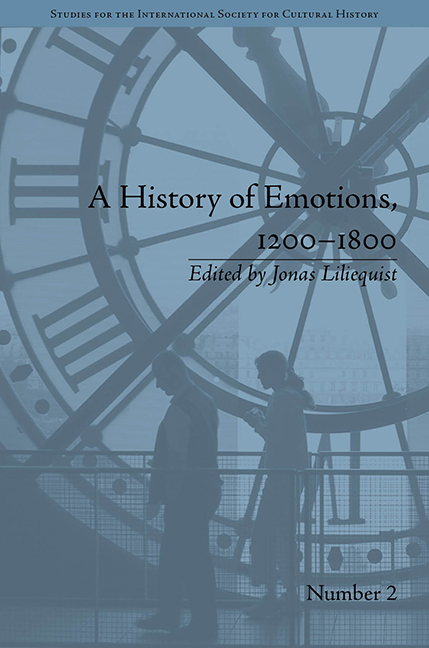Book contents
- Frontmatter
- Contents
- List of Contributors
- List of Figures
- Introduction
- I Theoretical Issues
- II Emotional Repertoires
- III Music and Art
- IV Gender, Sexuality and the Body
- 8 Emotions and Gender: The Case of Anger in Early Modern English Revenge Tragedies
- 9 Beauty, Masculinity and Love Between Men: Configuring Emotions with Michael Drayton's Peirs Gaveston
- 10 ‘Pray, Dr, is there Reason to Fear a Cancer?’ Fear of Breast Cancer in Early Modern Britain
- V Uses of Emotions
- Notes
- Index
8 - Emotions and Gender: The Case of Anger in Early Modern English Revenge Tragedies
from IV - Gender, Sexuality and the Body
- Frontmatter
- Contents
- List of Contributors
- List of Figures
- Introduction
- I Theoretical Issues
- II Emotional Repertoires
- III Music and Art
- IV Gender, Sexuality and the Body
- 8 Emotions and Gender: The Case of Anger in Early Modern English Revenge Tragedies
- 9 Beauty, Masculinity and Love Between Men: Configuring Emotions with Michael Drayton's Peirs Gaveston
- 10 ‘Pray, Dr, is there Reason to Fear a Cancer?’ Fear of Breast Cancer in Early Modern Britain
- V Uses of Emotions
- Notes
- Index
Summary
People [in the Middle Ages] are wild, cruel, prone to violent outbreaks and abandoned to the joy of the moment. … Not only among the nobility were there family vengeances, private feuds, vendettas. The towns were no less rife with wars between families and cliques. The little people, too – the hatters, the tailors, the shepherds – were all quick to draw their knives.
These are the words of Norbert Elias, in the first volume of his Civilizing Process, published in 1939. In Elias's widely influential view, anger in the medieval period was unconstrained. Only with the arrival of the absolutist court and the modern state in the early modern period did people learn to control their emotions and to adjust their conduct to that of others. Objections have been raised against Elias's teleological representation of historical emotions. Barbara Rosenwein has argued that this model, which views emotions as frothing fluids that need to be repressed and controlled, is no longer tenable in the context of modern cognitive theories in which the emotions play a key role in rational processes. Moreover, Elias's model represents the Middle Ages as a period of childlike, uncontrolled anger – a representation vigorously contested by medieval historians. Besides the role of anger, Elias's portrayal of the role of revenge in medieval society also invites scrutiny.
- Type
- Chapter
- Information
- A History of Emotions, 1200–1800 , pp. 119 - 134Publisher: Pickering & ChattoFirst published in: 2014



